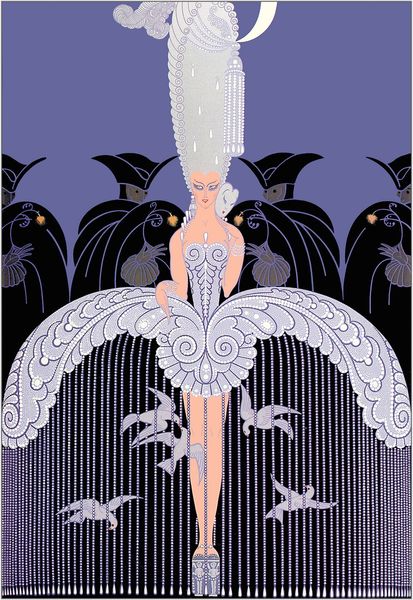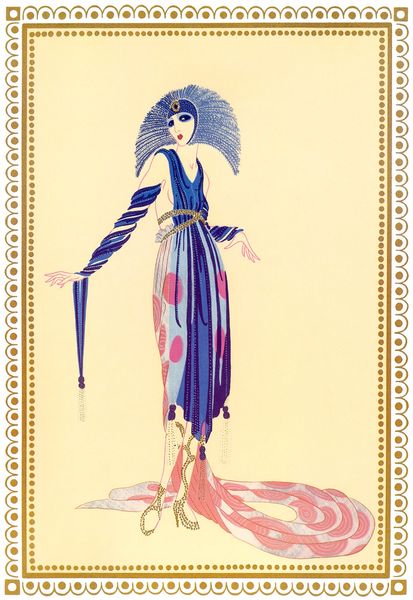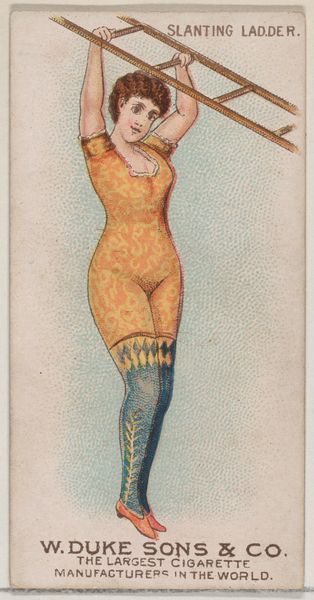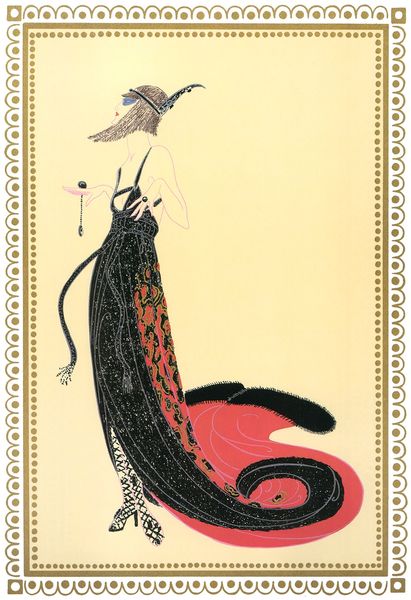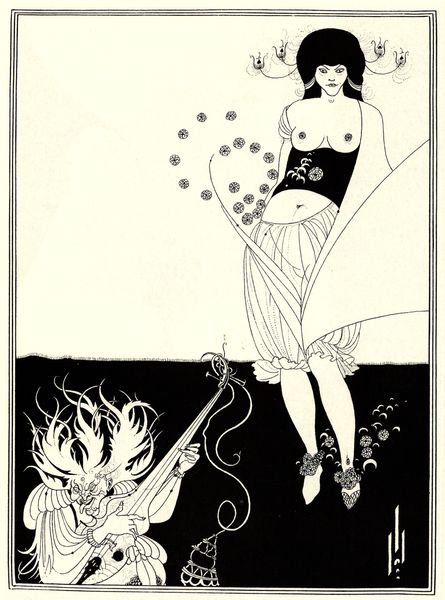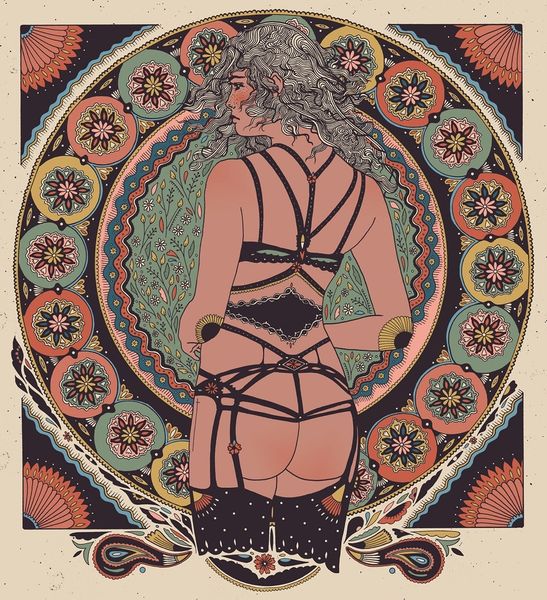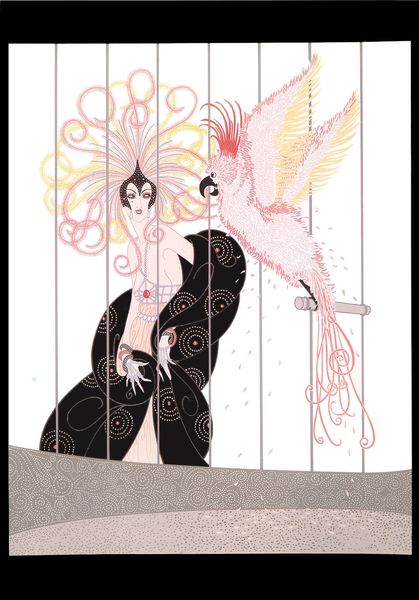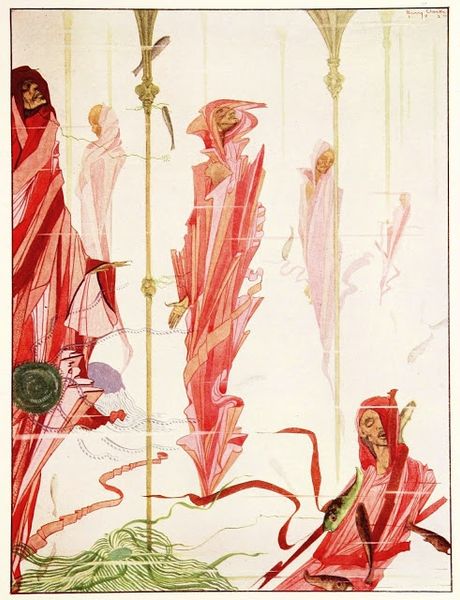
Front cover of ‘Falbalas & Fanfreluches, Almanach des Modes Présentes, Passées et Futures’ 1922 - 1926
0:00
0:00
watercolor
#
art-deco
#
pastel soft colours
#
figuration
#
watercolor
#
watercolour illustration
#
bridal fashion
Copyright: Public Domain: Artvee
Editor: This is the front cover of ‘Falbalas & Fanfreluches, Almanach des Modes Présentes, Passées et Futures’ by George Barbier, likely made between 1922 and 1926, using watercolor. I'm really struck by the blend of fashion and classical imagery. What exactly should we be seeing in this piece, besides a nice set of pastel colours? Curator: Look at the materiality, the means of production. It's a watercolor illustration intended for an almanac, a *commercial* publication dedicated to fashion. Note how it challenges traditional hierarchies of art. High art themes, like the cupid figure, are juxtaposed with the burgeoning world of fashion and print culture, demonstrating the breakdown of the boundary between high art and craft. Who do you think would engage with an almanac of fashion in the 1920s? Editor: I suppose it would be the emerging class of fashionable consumers? Women particularly, perhaps those with some degree of economic freedom in the post-war era? Curator: Precisely. Consider the labor involved in the *production* of these garments, contrasted with the lifestyle represented here. Barbier shows a world of luxury, concealing any sort of industrial origins. Editor: So the artist is highlighting the societal shift toward valuing style and presentation over…labor conditions? It sounds a bit grim when put like that! Curator: Or rather, Barbier may not necessarily highlight class exploitation; but that socioeconomic dynamic forms the material reality that enables Almanachs like ‘Falbalas & Fanfreluches’ to exist. I believe this kind of class-conscious understanding allows for richer engagements with the art. Editor: That perspective definitely gives me more to think about! Now I'm curious to delve into the socio-economic conditions that shaped the aesthetics of the Roaring Twenties. Curator: Indeed! Recognizing that art objects emerge from intricate socioeconomic environments deepens our perception of their significance.
Comments
No comments
Be the first to comment and join the conversation on the ultimate creative platform.


